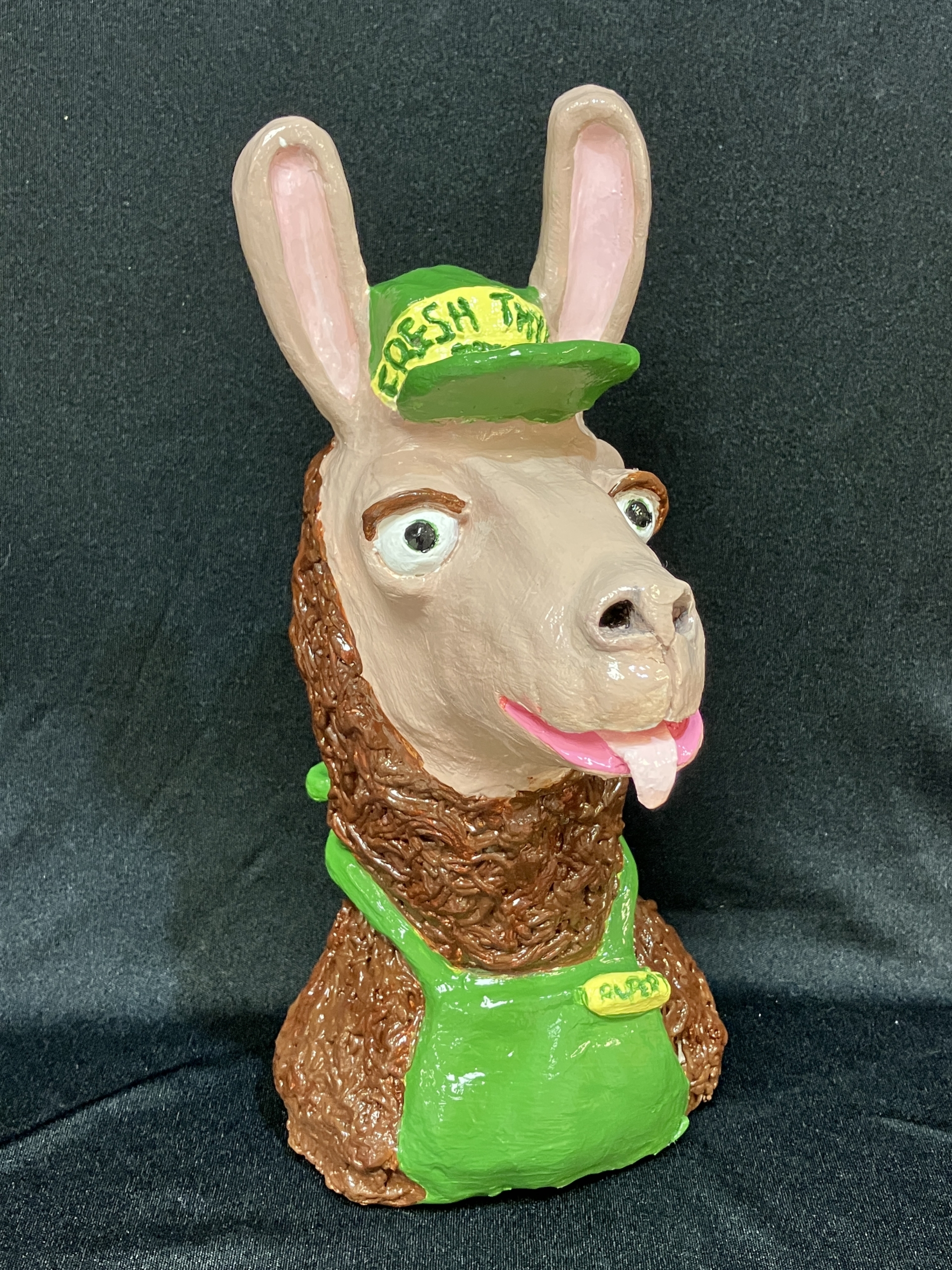Animorphic Busts
Meet The Teacher: Michelle Ridlen
Michelle Ridlen is a National Board-certified art educator with over 20 years of experience teaching students of all ages. She teaches high school ceramics and sculpture in the Francis Howell School District and has presented nationally on curriculum and inquiry-based learning. Michelle is a proud 2017 graduate of the NAEA School for Art Leaders.
Project Description
Students will learn how to form a base over an armature to create a bust of a human/animal and practice good structural technique. Students will combine the features of an animal with that of a human to create an animorphic bust.
Materials
- 5 lbs of white earthenware clay (per student)
- 2x6 board with hole
- dowel rod
- plastic sheeting (from bags of clay)
- Newspaper
- bucket of water
- Clay tools (knife, pin tool, modeling tools, ribs) and anything that creates texture
- acrylic paint and brushes
- Krylon Triple-Thick Crystal Clear Glaze sealer spray (or matte or satin finish spray)
Grade Level
High School
Difficulty
Advanced
Student Hands-On Time
15 - 50 min classes
Teacher Prep Time
2 hours
Project Cost / Cost Per Student
8
National Core Arts Standards - Visual Arts
- Creating - Generate and conceptualize artistic ideas.
- Creating - Organize and develop artistic work.
- Creating - Conceiving and developing new artistic ideas and work.
- Connecting - Relate artistic ideas to historical, cultural, and social contexts.
- Connecting - Connect personal experiences with artmaking and meaning.
21st Century Skills
- Critical Thinking & Problem-Solving
- Creativity & Innovation
- Communication
- Flexibility & Adaptability
- Initiative & Self-Direction
- Productivity & Accountability
STEAM Education
- Arts
Differentiations and Accommodations
Differentiation
IEP
Accommodation
Learning Objectives: Knowledge
Definition of armature, bust.
Learning Objectives: Skills
You will be able to plan works of art and design. You will be able to formulate new creative problems based on your existing artwork. You will be able to demonstrate skills in basic ceramic hand-building and/or wheel throwing techniques. You will be able to reflect on, re-engage, revise and refine works of art and design in response to your personal artistic vision and persevere when necessary in the face of obstacles or challenges.
Learning Objectives: Attitudes/Values
Clay building skills are used to construct a complex and visually interesting subject with character that is multidimensional.Subject has been built with clean and refined technique, including: An armature to support a hollow interior. Proper thickness throughout. Strong joints, seams, and attachments done at the proper clay stage to avoid cracking.Your chosen design and technique challenges you to improve your skills while being completed in a reasonable amount of time.
Formative Assessment
Ongoing individual conferencing during work time with Teacher given feedback. Half way through, gallery walk. Students walk the room and review work of peers. Use post-its to leave feedback with 1) what do I like? 2) Ask a question 3) Give a suggestion to make it even better
Summative Assessment
Students should photograph their finished bust and create a digital slide presentation to share the personality profile of their creature. Reflection questions and an artist statement caps off their work for a final evaluation.
Lesson Activities
Human Features Practice
Students will use scrap clay to practice each human facial feature including eye, nose, mouth, and ear. (about one day per feature)
Busts and Animorphs
Introduction to lesson including what a bust is in sculpture/ceramics. Students will examine artists that combine animals with humans as well as those that create busts.
Brainstorming, Research, & Sketches
Students will look at examples and then go through a brainstorming exercise that will help them develop their animorph's personality. Students should then research or take reference photos of their chosen animal, clothing and accessories before creating thumbnail sketches of their creature.
Building the Armature
Teacher will demonstrate how to assemble the armature and how to create the humanoid shell out of clay over the armature using approximately five pounds of clay and wet newspaper. Students will then build their blank humanoid bust.
Student Work Time
Now that the basic shell of the head is constructed, students can use paddles, modeling tools, and other found tools to begin constructing the details of their animorph creature. First they should construct the animal features and then construct any clothing or accessories, including textures. Busts should be stored with a plastic bag over the sculpture while working. The wet newspaper inside will keep the clay workable as long as it is covered.
Dry Time & Firing
Students should let their sculptures dry slowly. Any thin or protruding elements should be covered individually so they do not dry too fast and crack. Start with a loose bag with some air trapped in side and then once it is stiff leather hard remove from the base. Student should pull wet newspaper out from the inside and allow to dry slowly. Eventually the bag can be completely removed and the bust can be set out to completely dry before being bisque fired.
Cold Finish
After being bisque fired, the animorphic busts can be painted with either acrylic or watercolor paint. Thin layers work best to create depth and richness of color. When finished painting, use a spray sealer in the desired finish (gloss, satin, or matte). Take the busts outside or to a spray booth and apply the spray sealant. Let dry and then put on display to share the joy of your creation!



